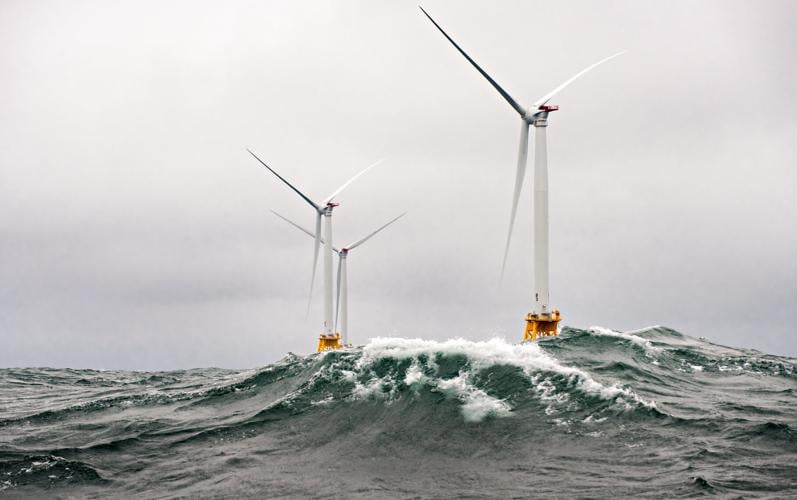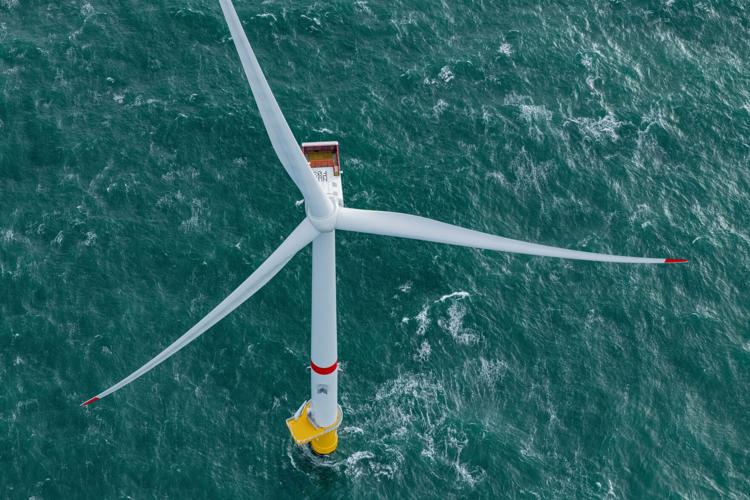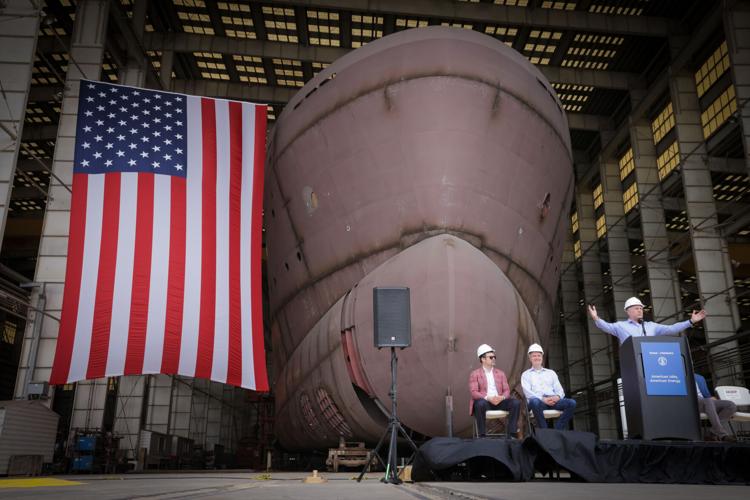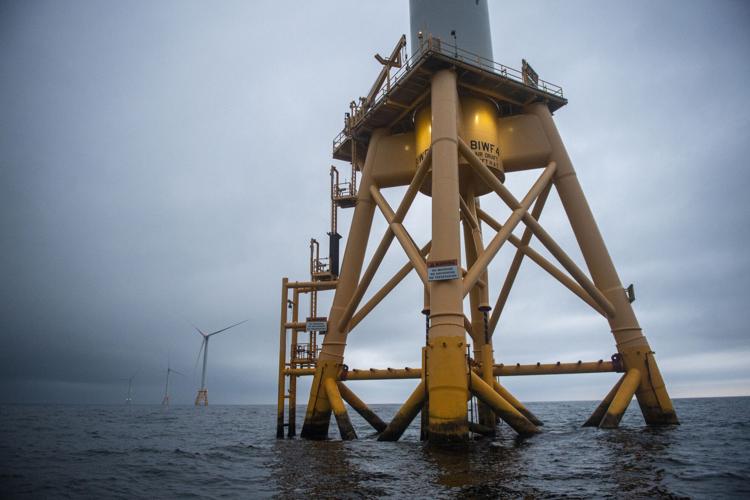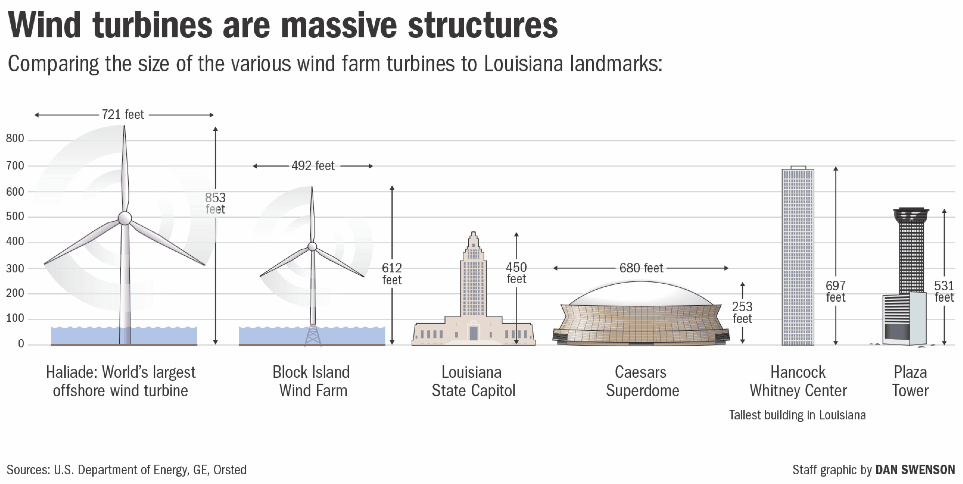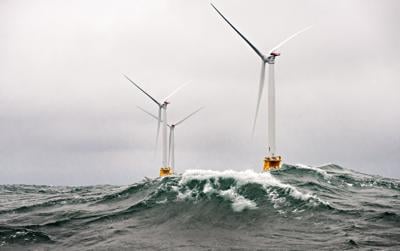A turf war on the southwest Louisiana coast is brewing between two industries that both aim to cut carbon emissions but say their multi-million dollar projects require the same stretch of offshore real estate.
Companies that plan to store tons of carbon dioxide under vast stretches of sea floor south of Cameron Parish are objecting to an overlapping development area Louisiana granted to a Danish offshore wind energy developer last month.
The two uses likely can’t coexist, the carbon-capture companies told the state Department of Natural Resources, which signed agreements for both uses on the same footprint along state-managed waters near Holly Beach and Creole.

Virginia-based Venture Global expressed its “strong objection” to the offshore wind agreement, saying it may “complicate or impede ongoing environmental assessments, testing and the rigorous underground (carbon) injection well permitting process."
Castex Carbon Solutions of Houston, which was also granted a large carbon dioxide storage area near Cameron, wants the DNR to make clear that its project “takes precedent” over the proposed wind farm.
Last month, the DNR granted 60,000 acres to Vestas, which operates in Louisiana under the name Cajun Wind. Vestas’ wind project shares a partial footprint with both carbon storage projects.
The company has declined to give specifics about its proposed wind farm. Vestas bills itself as a world leader in wind-energy development, installing more than 164 gigawatts of onshore and offshore turbines in 88 countries.
Vestas indicated this week that it could share space with the carbon-storage companies.

A Vestas wind turbine spins over the North Sea near Belgium.
"We are aware that the area subject to our operating agreement has some overlap with an operating agreement granted to carbon capture and sequestration," Vestas said in a statement. "We intend to be a good neighbor and to promote all forms of energy that exist in the state of Louisiana, as wind energy will be another resource to help the state diversify its economy and to maximize the value of the land."
Carbon capture and sequestration, known as CCS, and offshore wind energy are considered two of the main tools for mitigating global climate change. President Joe Biden's administration is pushing both technologies with ambitious carbon-reduction goals and massive subsidies and tax credits from the Inflation Reduction Act.
The seafloor near Cameron and east Texas has swaths of underground porous rock that scientists say are ideal for carbon dioxide storage. The coasts of Texas and Louisiana could store hundreds of billions of tons of carbon dioxide, “representing the largest national resources for CO2 storage and a resource capable of receiving decades of annual regional emissions, and likely national emissions,” according to a 2021 report from the University of Texas at Austin.
Offshore wind-energy companies say the same area is also a prime location for developing the Gulf’s first wind farms. In August, the German energy firm RWE won the right to develop a 100,000-acre wind farm in the Gulf’s federal waters, which start 3 miles from the Louisiana coast. RWE’s wind farm could be more than 30 miles from the coast, but Vestas’ wind development area stretches from Cameron’s beachfront to about 3 miles offshore.

U.S. House Majority Leader Steve Scalise, R-Jefferson, speaks in front of the 262-foot-long Eco Edison ship at LaShip in Houma on Tuesday, April 4, 2023. (Photo by Brett Duke, NOLA.com | The Times-Picayune)
Offshore wind companies say the waters off southwest Louisiana offer both good wind speeds and proximity to industrial ports and companies that can build and service offshore infrastructure.
DNR hasn’t directly addressed the carbon-storage companies' concerns. The agency’s agreement with Vestas was approved just as the DNR was shifting to new leadership under the administration of Gov.-elect Jeff Landry.
On Wednesday, Landry announced that Tyler Gray, the corporate secretary for Placid Refining and a past president of the Louisiana Mid-Continent Oil and Gas Association, will be the new head of the DNR, which will be renamed the Department of Energy and Natural Resources effective Jan. 10.
DNR spokesperson Patrick Courreges said the carbon-storage companies and Vestas are communicating and may work out a shared-use agreement.
“Both their legal teams are working on a way to move forward without stepping on each other,” he said.

The platforms for these wind turbines in the Atlantic Ocean near Block Island, Rhode Island, were made in south Louisiana.
The carbon-storage companies did not respond to requests for comment.
Venture’s agreement with the DNR dates back to late 2022, when a 18,000-acre carbon-injection area was approved for the waters off Cameron Parish.
The company owns a large liquified gas facility in Cameron and plans to build a $10 billion LNG export facility nearby.
Castex was granted a 24,000-acre area off Cameron in August, just four months before Vestas’ agreement was approved.
While the Venture and Castex projects are primarily focused underground and Vestas is concerned with relatively small areas of seabed for the foundations of wind turbines, the CCS companies say plenty of conflicts may be on the horizon.

Louisiana lift boat operators helped build the Block Island Wind Farm off the coast of Rhode Island. Completed in 2016, the project was the first offshore wind farm in U.S. waters.
Castex's carbon-storage project “will utilize new pipelines, surface equipment and subsurface monitoring infrastructure that could be jeopardized” by an offshore wind farm, Castex told the DNR in a letter last month.
The company stressed that its already agreed to pay the DNR a $7.3 million “bonus payment,” nearly $1.5 million in annual rental fees and an injection fee of $7.50 per ton of carbon.
Both companies indicated they knew little about the offshore wind agreement.
Castex told the DNR it had “not been provided with any information” about the Vestas' proposed wind farm.
It’s not the first time offshore wind and carbon-storage enterprises have come to loggerheads.
Last year, BP and offshore wind developer Orsted were caught in a standoff over overlapping projects in the North Sea. The British government had granted licenses for a BP carbon storage project and an Orsted wind farm in an overlapping zone. Five months later, the two companies reached a “commercial agreement” allowing both projects to move forward. Details about the agreement were not disclosed.

